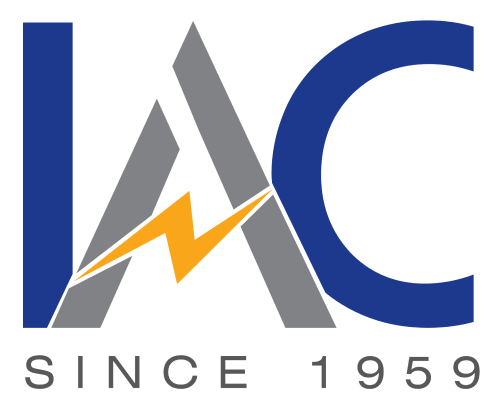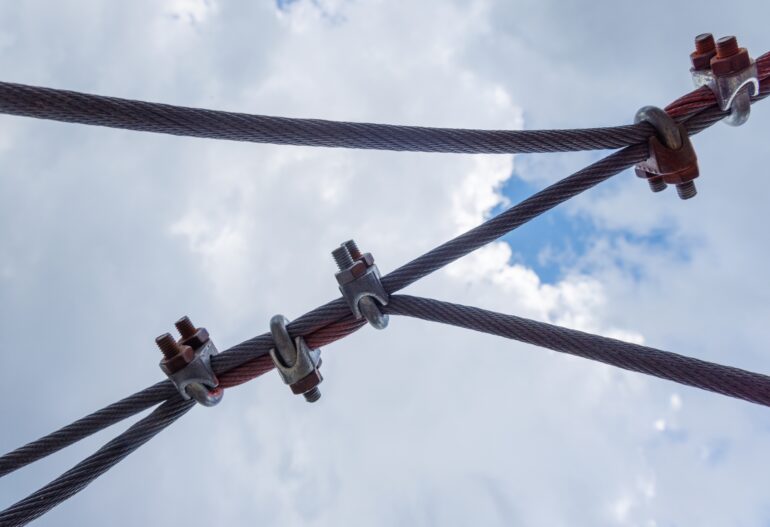Pole line hardware fittings and accessories are essential components in the infrastructure of electrical and telecommunication networks. These fittings and accessories are designed to support and secure power lines and communication cables on utility poles, ensuring the stability, efficiency, and safety of the distribution systems.
From clamps, brackets, and cross arms to insulators, bolts, and connectors, each piece of hardware plays a critical role in maintaining the structural integrity and functionality of pole lines. These components are typically made from high-quality materials such as galvanized steel, aluminum, and polymer to withstand harsh environmental conditions and provide long-lasting durability.
In this blog, IAC Electricals,transmission line hardware manufacturer company in India explain about the uses of pole line hardware and its uses in the electrical substation. So, let’s read on!
What is Pole Line Hardware?
Pole line hardware comprises a variety of components used in constructing and maintaining overhead power lines.
These include insulators, clamps, brackets, crossarms, and numerous other fittings. These elements work in tandem to support and safeguard electrical conductors while securely anchoring them to utility poles.
The Importance of Pole Line Hardware
The significance of pole line hardware cannot be overstated. It directly impacts the following:
- Safety: Proper installation and maintenance of pole line hardware are paramount in preventing electrical accidents, injuries, and property damage.
- Reliability: High-quality hardware ensures uninterrupted power supply, minimizing outages and disruptions to daily life and business operations.
- Efficiency: Well-designed hardware contributes to the overall efficiency of the power grid by reducing energy losses.
- Longevity: Durable hardware extends the lifespan of the power line infrastructure, reducing maintenance costs and environmental impact.
Types of Pole Line Hardware
To better appreciate the role of pole line hardware, let’s explore some key pole line hardware accessories and their functions:
- Insulators: These non-conductive components prevent electricity from flowing to the pole, ensuring safety and preventing short circuits.
- Suspension insulators: Support conductors in a sagged configuration.
- Strain insulators: Withstand higher tension loads in specific sections of the line.
- Pin insulators: Attach insulators to crossarms.
- Clamps: These metal fittings connect conductors to insulators or other hardware.
- Dead-end clamps: Secure conductors at the end of a line.
- Suspension clamps: Support conductors in a sagged configuration.
- Tension clamps: Maintain conductor tension in high-voltage lines.
- Crossarms: These horizontal beams are attached to poles to support insulators and conductors.
- Brackets: Used to attach various equipment, such as transformers, streetlights, and other devices, to the pole.
- Guy wires and attachments: Provide additional support to poles in areas with high winds or other adverse conditions.
- Grounding hardware: Ensures electrical safety by providing a low-resistance path for fault currents to the earth.
Challenges and Considerations
The selection and installation of pole line hardware are influenced by various factors:
- Voltage level: Hardware must be rated for the appropriate voltage level to maintain safety and reliability.
- Conductor size: The hardware should be compatible with the size and type of conductors used.
- Environmental conditions: Factors such as wind, ice, and temperature extremes influence hardware selection.
- Load capacity: Hardware must be able to withstand the mechanical loads imposed by conductors and other equipment.
- Standards and regulations: Adherence to industry standards and regulatory requirements is crucial for safety and performance.
The Future of Pole Line Hardware
As the power grid evolves to accommodate renewable energy sources and increasing electricity demand, the role of pole line hardware is becoming even more critical. Advancements in materials science and engineering are leading to the development of more durable, efficient, and environmentally friendly hardware solutions. Additionally, the integration of smart grid technologies is driving the need for pole line hardware that can support advanced monitoring and control systems.
Its importance in ensuring the safe, reliable, and efficient delivery of electricity cannot be overstated. By understanding the various components and their functions, we can better appreciate the complexity and critical role pole line hardware plays in our modern world.






